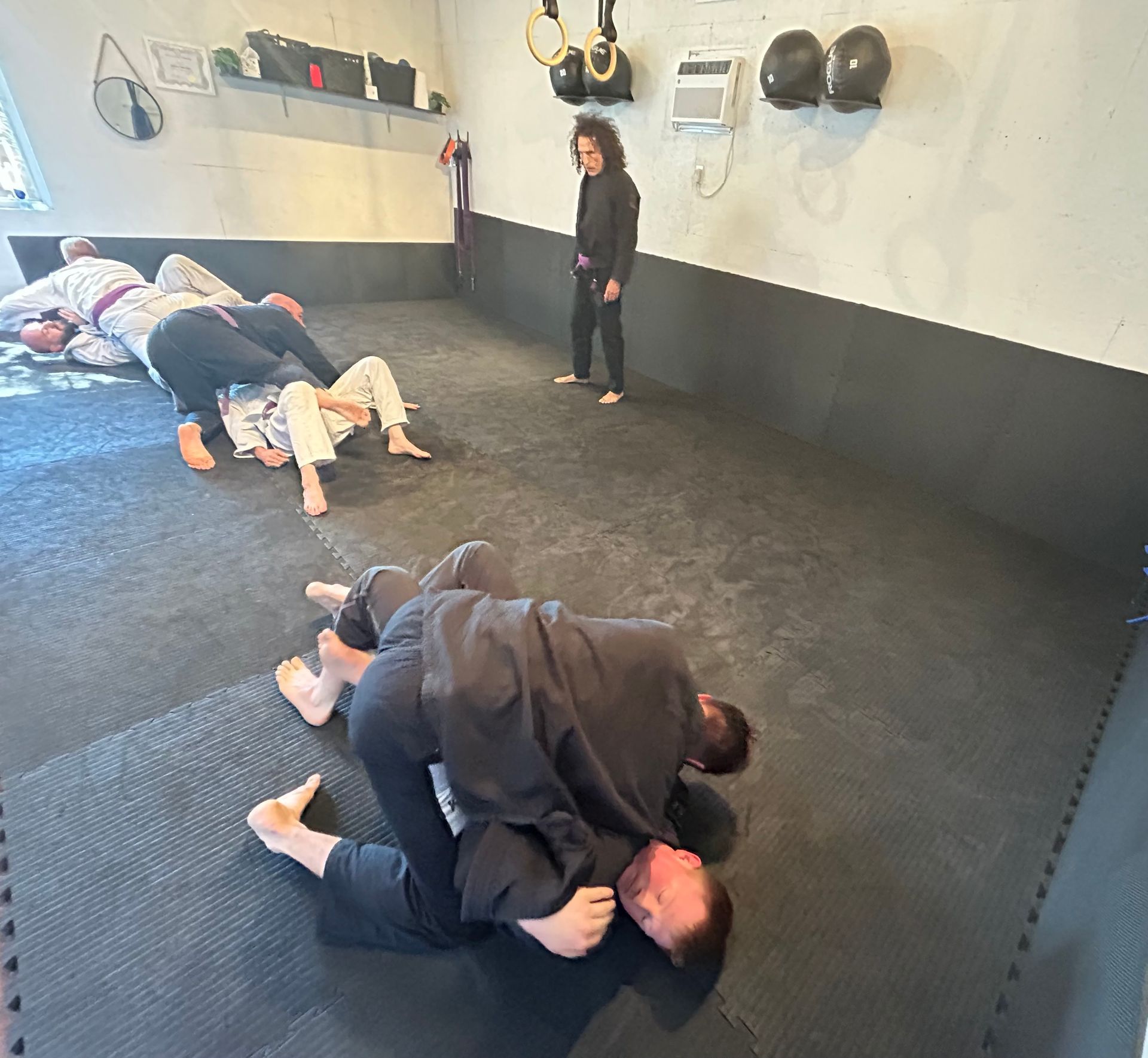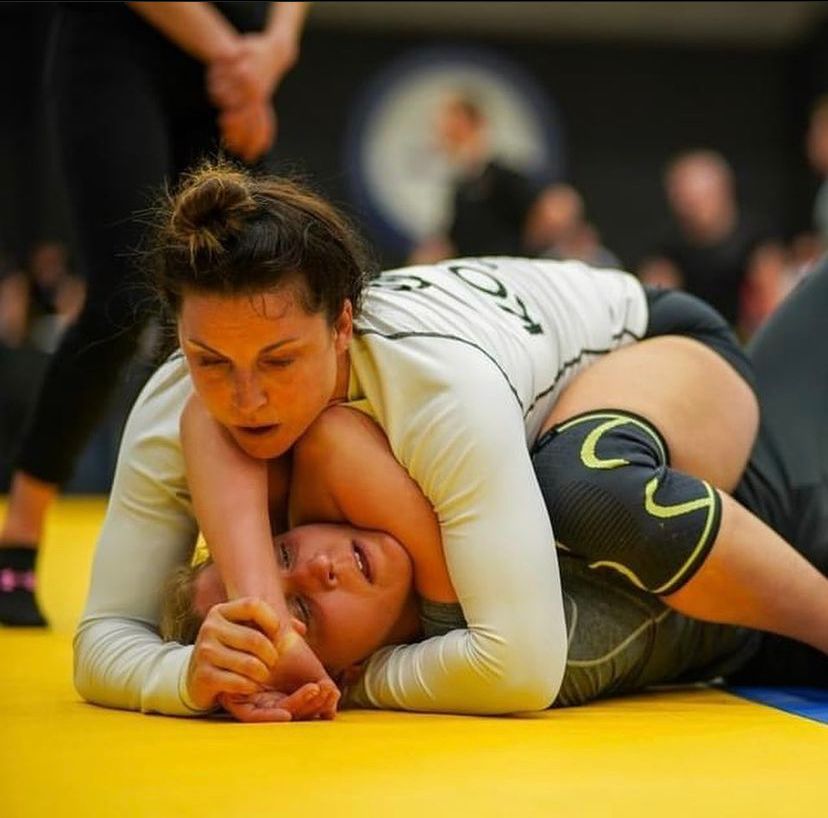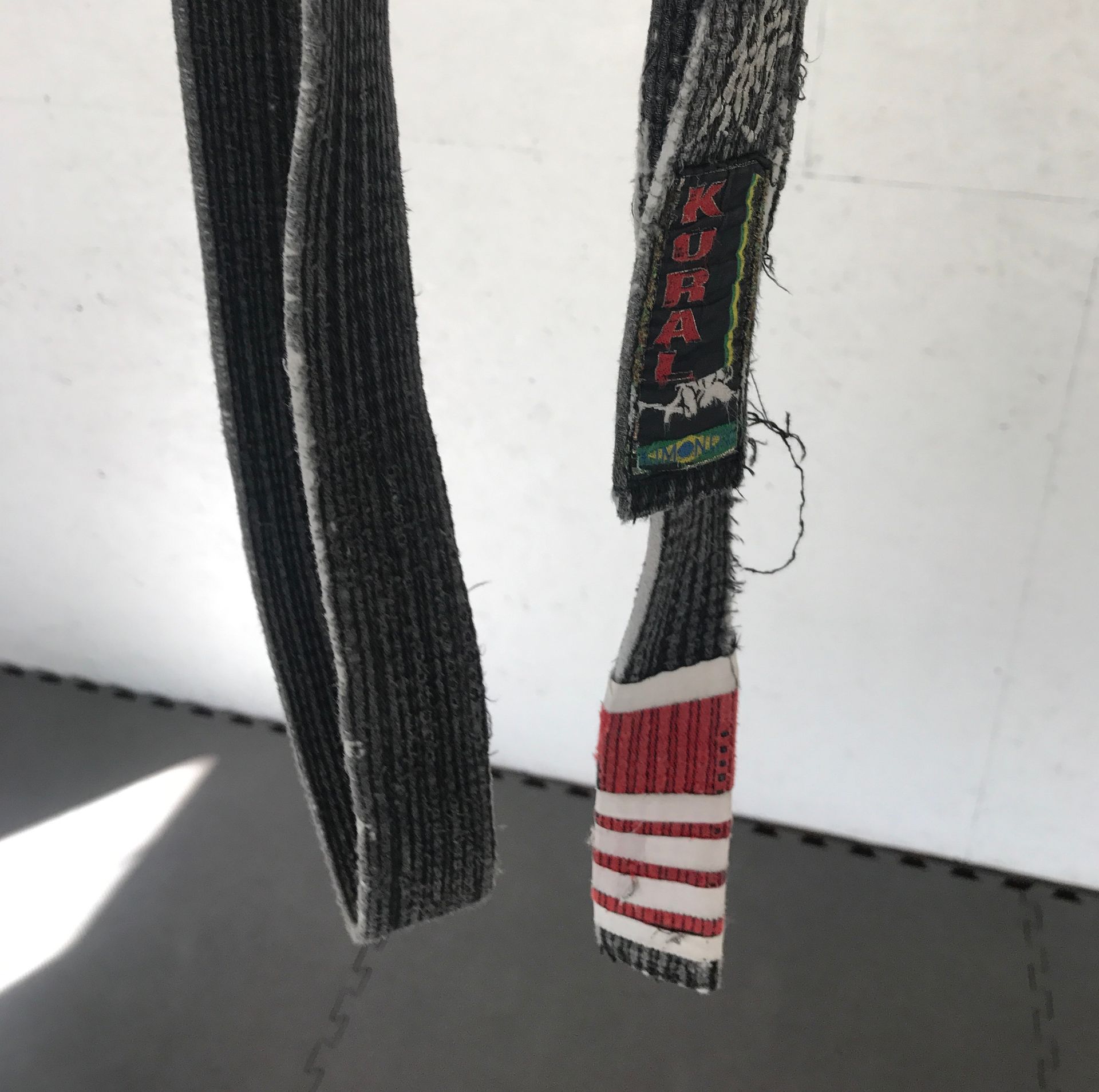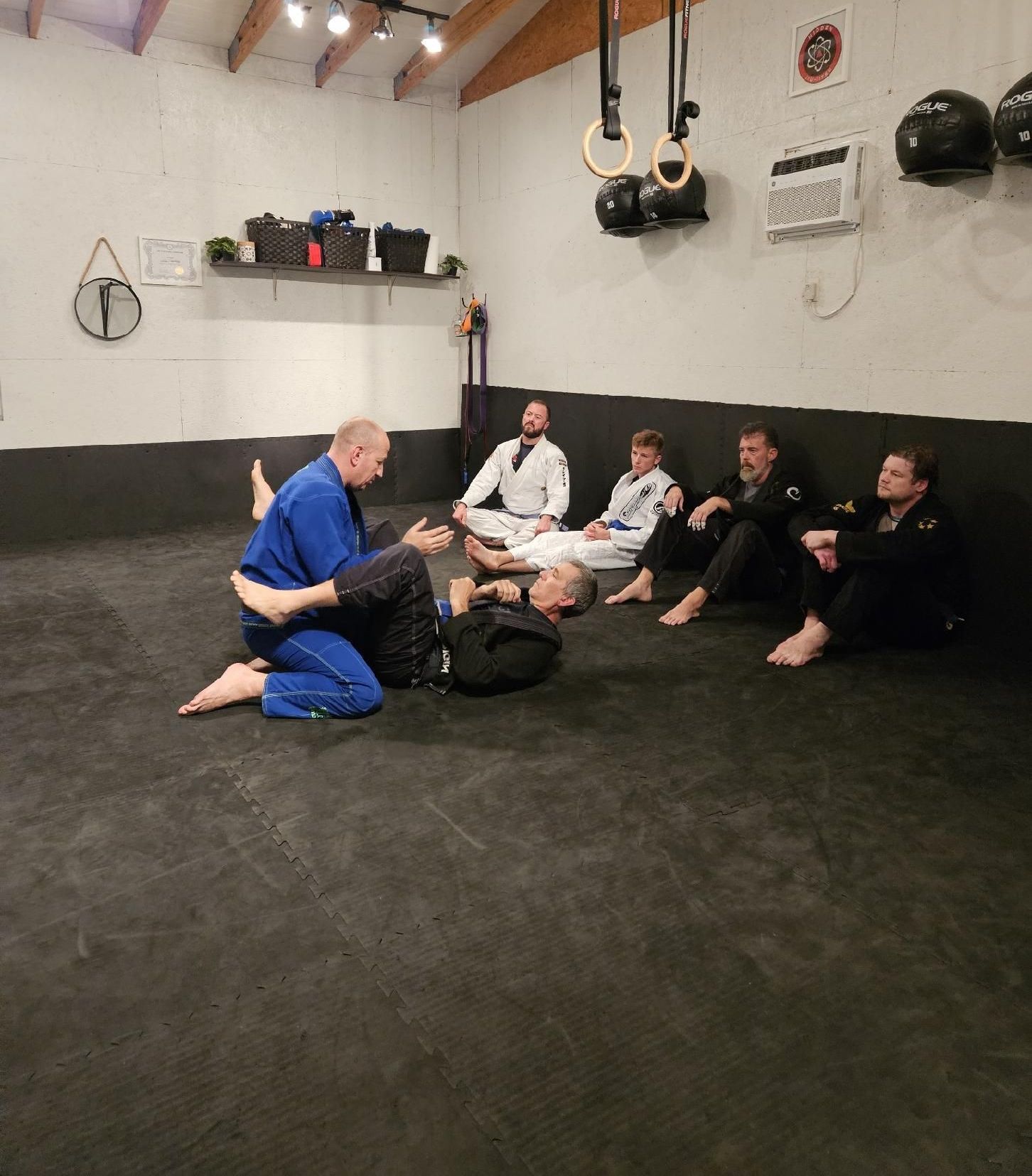the latest news & events
blog
Explore our blog to get up-to-date information about our gym!

Stepping onto the mat for the first time as a white belt in Brazilian Jiu Jitsu (BJJ) can feel overwhelming. The techniques, terminology, and sheer physicality of the sport might leave you wondering where to begin. If you’re new to BJJ, the best place to focus your energy is on surviving inferior positions and learning fundamental escapes. This foundation will give you the confidence to stay composed under pressure and begin to develop your game. Focus on Survival First In BJJ, you’ll often find yourself in bad positions, especially as a beginner. It’s tempting to focus on flashy submissions or complex moves, but survival is the cornerstone of progression. Survival means staying calm, conserving energy, and avoiding submissions while maintaining awareness of your opponent's intentions. Common inferior positions include: Mount: Your opponent is sitting on your chest, pinning you to the ground. Side Control: Your opponent has passed your legs and is controlling your torso from the side. Back Control: Your opponent has hooks in with their legs and is attacking your neck from behind. These positions can feel suffocating at first, but survival comes down to staying composed, protecting your neck and arms, and not wasting energy on futile escapes. The goal is to make yourself a hard target—someone difficult to submit or control. Understand Frames and Hip Movement Two fundamental concepts underpin survival and escapes: frames and hip movement. Frames: Think of frames as barriers you create with your limbs to keep space between you and your opponent. For example, placing your forearm against their hips or shoulders can prevent them from smothering you entirely. Hip Movement: Your hips are your powerhouse in BJJ. Effective hip movement allows you to create space, shift your weight, and disrupt your opponent's control. Techniques like shrimping (moving your hips away while pushing off the ground) are essential for escaping tight positions. Learn Fundamental Escapes Escapes are your ticket out of bad spots. While there are countless escapes in BJJ, here are a few foundational ones to start with: Bridge and Roll Escape from Mount Trap your opponent's arm and leg on one side, bridge your hips upward to off-balance them, and roll them over to reverse the position. Shrimp Escape from Side Control Use your frames to create space, then shrimp your hips away to recover guard or get back to a neutral position. Back Escape Focus on protecting your neck and moving your hips to escape the hooks. Once free, turn toward your opponent to regain a safer position. Stay Patient and Trust the Process BJJ is a long journey, and progress often feels slow. As a white belt, measure success not by how many techniques you know but by how effectively you can survive and escape tough positions. This foundation will set you up for greater success as you progress. Stay consistent, stay curious, and remember: every black belt was once a white belt learning to survive.

Overcoming the Plateaus: Strategies for Navigating Frustrations in Brazilian Jiu-Jitsu Training Brazilian Jiu-Jitsu (BJJ) is often called a "journey" for a reason. With its blend of physicality, strategy, and constant learning, it’s one of the most rewarding martial arts. However, like any worthwhile endeavor, it’s also filled with challenges, frustrations, and moments when progress feels elusive. If you’ve been training for a while, chances are you’ve encountered these low points. The good news? They’re a natural part of the process, and there are strategies to overcome them. Here’s how you can navigate the highs and lows of BJJ training. Understanding the Frustration Before addressing the frustration, it’s helpful to understand its roots. Common causes include: Hitting Plateaus: You’ve been drilling the same techniques for weeks, but your rolls feel stagnant. Comparing Yourself to Others: Watching a teammate progress faster than you can sting, leading to self-doubt. Physical and Mental Burnout: Overtraining or juggling other life responsibilities can sap your energy. Injury Setbacks: Dealing with an injury can disrupt your routine and make returning to the mats feel daunting. Strategies to Overcome Frustrations 1. Shift Your Mindset Focus on Small Wins: Instead of fixating on tapping out a higher belt, celebrate incremental improvements like better positioning or escaping submissions. Embrace the Process: Understand that mastery takes time. Every roll, successful or not, contributes to your growth. 2. Set Realistic Goals Break down your training into achievable objectives. For instance: Master a specific escape or submission this month. Improve your guard retention by focusing on posture and grips. Regularly revisit and adjust your goals to keep them challenging but attainable. 3. Seek Feedback and Guidance Talk to your coaches and teammates about your struggles. They can provide valuable insights or suggest tweaks to your game. Consider private lessons or video analysis to pinpoint areas for improvement. 4. Mix Up Your Training If monotony is causing frustration, try a new approach: Experiment with different guards or positions. Attend open mats to roll with unfamiliar partners. Cross-train in a related discipline like wrestling or judo to expand your skill set. 5. Take Care of Your Body and Mind Prioritize rest and recovery to avoid burnout. Incorporate activities like yoga or swimming to stay active without overloading. Address injuries promptly with proper care and rehabilitation. Practice mindfulness or meditation to manage stress and maintain focus. 6. Reframe Comparisons Remember that everyone’s journey is unique. Instead of comparing yourself to others, use their progress as inspiration. Reflect on how far you’ve come since your first class, not how far you have to go. 7. Stay Connected to Your "Why" Revisit the reasons you started training. Was it for fitness, self-defense, community, or personal growth? Reminding yourself of your initial motivation can reignite your passion. The Value of Persistence Every BJJ practitioner—even black belts—has faced periods of frustration. The key is not to let these moments define your journey. Instead, see them as opportunities to build resilience and deepen your understanding of the art. Remember: Progress in BJJ is not linear. It’s a spiral, where each lap around the circle brings you back to the basics but with a more profound understanding. Stay patient, stay consistent, and trust the process. Your future self will thank you. Now, go hit the mats, embrace the grind, and let the art of BJJ transform not just your skills but your mindset.

The Brazilian Jiu-Jitsu (BJJ) belt system represents a practitioner’s progression in skill, experience, and dedication. Unlike some martial arts, BJJ’s belt progression can take years of rigorous training, making each belt a significant milestone. This article explains the belt system for adults and provides insights into what each belt represents. 1. White Belt: The Starting Point The white belt is where everyone begins their BJJ journey. It signifies the start of learning fundamental techniques, movements, and the basics of rolling (sparring). White belts focus on understanding positional hierarchy, escapes, and survival skills. Typically, practitioners remain white belts for 1-2 years. 2. Blue Belt: Establishing a Foundation The blue belt is awarded after a practitioner demonstrates proficiency in fundamental techniques and concepts. At this stage, students refine their defensive skills and start developing offensive strategies. The journey to a blue belt usually takes 1-3 years. 3. Purple Belt: Intermediate Mastery The purple belt is a significant milestone, symbolizing advanced technical knowledge and a deeper understanding of the art. Purple belts often begin mentoring others and may focus on specific techniques or styles. This rank typically requires 2-4 years at the blue belt level. 4. Brown Belt: Polishing the Craft The brown belt is the penultimate rank before black belt. At this stage, practitioners fine-tune their skills, address weaknesses, and begin developing a personal game. Brown belts often focus on transitions, submissions, and teaching others. This belt is usually earned after 1-2 years as a purple belt. 5. Black Belt: The Journey Continues Earning a black belt in BJJ is a remarkable achievement, often requiring 8-12 years of dedicated training. Black belts are seen as masters of the art but are still lifelong learners. They continue to refine their skills, teach others, and contribute to the BJJ community. Stripes and Promotions Between belt promotions, students can earn stripes to signify progress within a belt. Stripes help maintain motivation and provide recognition of a student’s dedication and improvement. Why the Journey Matters The BJJ belt system emphasizes the journey rather than the destination. Each rank reflects personal growth, perseverance, and a deepening connection to the art. The time it takes to progress ensures that every promotion is well-deserved and meaningful. Conclusion Brazilian Jiu-Jitsu’s belt system is more than just a measure of skill—it’s a testament to a practitioner’s commitment, discipline, and passion. Whether you’re just starting as a white belt or striving toward the black belt, every step is an opportunity for growth and learning.

If you’ve ever been curious about Brazilian Jiu-Jitsu (BJJ) or are looking for a new challenge to add to your life, now is the time to take the plunge. BJJ is more than just a martial art — it’s a transformative experience that offers a wide range of benefits for people of all ages and fitness levels. Here are 10 compelling reasons why you should consider stepping onto the mats and starting your BJJ journey today. 1. Self-Defense Skills BJJ is one of the most effective martial arts for self-defense. Its techniques focus on leverage and strategy, allowing smaller individuals to defend themselves against larger opponents. You’ll learn how to neutralize threats and escape dangerous situations without relying solely on strength. 2. Full-Body Workout BJJ is a fantastic way to get in shape. The dynamic movements engage every muscle group, improving your strength, flexibility, and cardio endurance. Each session feels less like a workout and more like a game, making fitness fun and sustainable. 3. Mental Resilience Jiu-Jitsu teaches you to stay calm under pressure. The problem-solving aspect of grappling helps you develop mental toughness and the ability to think clearly in high-stress situations. Over time, this resilience translates into other areas of your life. 4. Community and Camaraderie BJJ gyms foster a sense of belonging. The camaraderie among teammates is unparalleled as you learn, train, and improve together. Many people find lifelong friendships through the shared experience of training. 5. Stress Relief Life can be stressful, but stepping onto the mats provides an escape. The physical exertion and mental focus required for BJJ help you release tension and leave your worries behind. You’ll finish every class feeling refreshed and rejuvenated. 6. Build Confidence Mastering new techniques and improving your skills over time builds self-confidence. Whether it’s conquering a challenging move or winning a friendly sparring match, the progress you make in BJJ boosts your self-esteem. 7. Practical and Safe Sparring Unlike some martial arts that rely heavily on striking, BJJ focuses on grappling and submissions. This allows you to spar and practice at full intensity without the risks of repeated high-impact strikes, making it a safer way to train. 8. Goal Setting and Achievement BJJ is structured around achieving milestones, such as earning new belts or mastering specific techniques. This progression helps you set goals and celebrate your achievements, providing a sense of purpose and accomplishment. 9. Applicable at Any Age Whether you’re a teenager, in your 30s, or starting in your 50s, BJJ is for everyone. With its focus on technique over brute force, people of all ages can train and enjoy the benefits of this martial art. 10. A Lifelong Journey BJJ is a never-ending journey of learning and self-improvement. No matter how experienced you become, there’s always something new to discover. This continuous evolution keeps the art exciting and fulfilling for years to come. Ready to Start? If you’re ready to improve your fitness, sharpen your mind, and join a welcoming community, Brazilian Jiu-Jitsu is the perfect choice. Our gym offers classes for beginners, so there’s no need to feel intimidated. Come in for a free trial class and see for yourself why so many people fall in love with BJJ. Your journey awaits!
Master the Art of BJJ in Springfield, MO
Whether you're a total beginner or a seasoned practitioner, our expert-led Jiu Jitsu training will help you reach new heights in your martial arts mastery. Book a free intro today!


